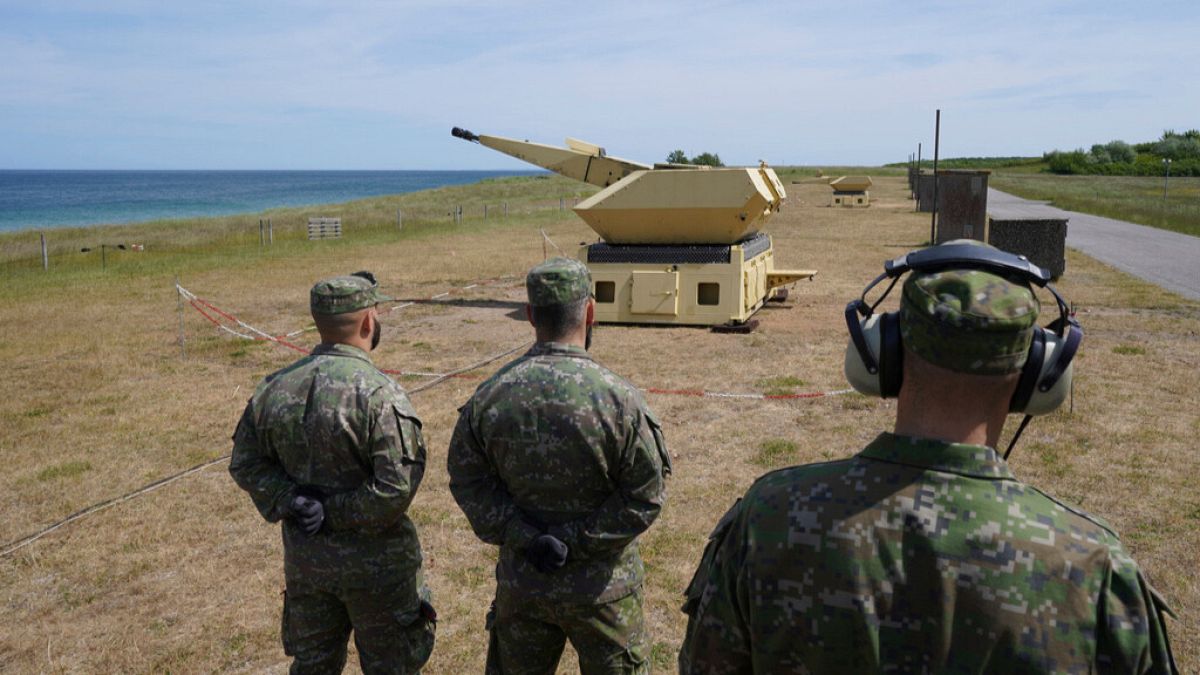Education
Opinion | Oklahoma’s Religious Public Charter School Would Be an Affront to Taxpayers Everywhere

Something deeply un-American is underway in the state of Oklahoma.
In June, Oklahoma’s Statewide Virtual Charter School Board approved the nation’s first religious public charter school. The Archdiocese of Oklahoma City and the Diocese of Tulsa were given permission to open St. Isidore of Seville Catholic Virtual School in August 2024.
That’s right, a religious public school, funded by the state’s taxpayers. Proponents hope this model will spread to the dozens of other states that allow charter schools. Seven percent of public school students in the country attended charter schools as of the fall of 2021, and that number continues to grow. That’s why Christian nationalist groups see charter schools as fertile ground for their full-on assault on the separation of church and state in public education.
In just the past year, significant progress has been made in infusing Christianity into public schools. Texas, for example, now allows public schools to replace certified school counselors with religious chaplains and came close to requiring every classroom to display the Ten Commandments. New laws in Idaho and Kentucky could allow teachers and other public school employees to pray in front of — and even with — students. Missouri and Louisiana authorized public schools to teach Bible classes. West Virginia nearly passed a bill that would allow public schools to teach intelligent design creationism. Accompanying these laws are increasingly successful efforts to ban books and lessons about race, sexual orientation, gender identity and even menstruation in public schools.
The establishment of a school that claims to be simultaneously public and religious — what has been a legal oxymoron in the United States since its founding — violates one of the foundational principles of American constitutional tradition: the separation of church and state. It also threatens religious freedom and undermines public education.
The United States Supreme Court has emboldened Christian nationalists by holding twice in the past three years that if a state funds private secular schools, it must also fund private religious schools. But charter schools are taxpayer-financed public schools — not private schools.
Oklahoma law stipulates that charter schools are public schools and “shall be nonsectarian in” their “programs, admission policies, employment practices and all other operations.” But late last year, the state’s attorney general at the time, John O’Connor, issued an advisory opinion requested by the executive director of the charter school board, in which he concluded that those restrictions most likely violated the First Amendment’s free exercise clause.
This is the same Mr. O’Connor who, in a speech to a Rotary Club earlier in 2022, expressed concern about a “godless America” and went on to say, according to The Sand Springs Leader, that a God-based country isn’t one in which “everybody is forced to believe the same thing. It means we acknowledge that there’s a God who has values and endows us or imbues us with those values that are not granted to us by the government. They are granted to us by God.”
Mr. O’Connor was defeated last summer in the state’s Republican primary, and his successor, a fellow Republican and the current attorney general, Gentner Drummond, rescinded his predecessor’s advisory opinion, called the charter school board’s decision “unconstitutional” and warned of possible legal action if a contract for the school is signed.
In a recent interview with Politico, Mr. Drummond said that he believed the “genesis” of efforts to have taxpayers pay for religious-based school instruction “is in Christian nationalism.” He told Politico’s Weekly Education newsletter that “this Christian nationalism is the movement that is giving oxygen to this attempt to eviscerate the establishment clause,” the doctrine of separation of church and state.
Indeed, it’s hard to think of a clearer violation of the religious freedom of Oklahoma taxpayers and public-school families than the state establishing a supposedly public school that is run as a religious school. Forcing taxpayers to fund religion, let alone a religion not their own, violates the Oklahoma Constitution’s explicit command that no public money or property “shall ever” be used to benefit or support religion. It’s exactly what Thomas Jefferson labeled “sinful and tyrannical.”
That is why the organization I head, Americans United for Separation of Church and State, together with the A.C.L.U., the Education Law Center and the Freedom From Religion Foundation, filed a lawsuit on Monday in state district court in Oklahoma to prevent the school from operating as a charter school.
Public schools must remain neutral when it comes to religion and must welcome all. St. Isidore claims it welcomes “students of all faiths or no faith.”
But here’s the catch: According to St. Isidore’s website, students must “appreciate and desire a robust Catholic education,” and students and families must have a “willingness to adhere with respect to the beliefs, expectations, policies and procedures of the school.” St. Isidore also said that it will operate “in harmony with faith and morals, including sexual morality, as taught and understood by the Magisterium of the Catholic Church based upon Holy Scripture and sacred tradition.” That’s a clear description of a Catholic school, not a public one.
A public school that is subsumed in any one church’s dogma is no longer a public school. Yet Oklahoma taxpayers will be on the hook to pay for it.
Rachel Laser is the president and chief executive of Americans United for Separation of Church and State.

Education
Four Fraternity Members Charged After a Pledge Is Set on Fire

Four fraternity members at San Diego State University are facing felony charges after a pledge was set on fire during a skit at a party last year, leaving him hospitalized for weeks with third-degree burns, prosecutors said Monday.
The fire happened on Feb. 17, 2024, when the Phi Kappa Psi fraternity held a large party at its house, despite being on probation, court documents show. While under probation, the fraternity was required to “demonstrate exemplary compliance with university policies,” according to the college’s guidelines.
Instead, prosecutors said, the fraternity members planned a skit during which a pledge would be set on fire.
After drinking alcohol in the presence of the fraternity president, Caden Cooper, 22, the three younger men — Christopher Serrano, 20, and Lars Larsen, 19, both pledges, and Lucas Cowling, 20 — then performed the skit, prosecutors said.
Mr. Larsen was set on fire and wounded, prosecutors said, forcing him to spend weeks in the hospital for treatment of third-degree burns covering 16 percent of his body, mostly on his legs.
The charges against Mr. Cooper, Mr. Cowling and Mr. Serrano include recklessly causing a fire with great bodily injury; conspiracy to commit an act injurious to the public; and violating the social host ordinance. If convicted of all the charges, they would face a sentence of probation up to seven years, two months in prison.
Mr. Larsen himself was charged. The San Diego County District Attorney’s office said that he, as well as Mr. Cooper and Mr. Cowling, also tried to lie to investigators in the case, deleted evidence on social media, and told other fraternity members to destroy evidence and not speak to anyone about what happened at the party.
All four men have pleaded not guilty.
Lawyers representing Mr. Cooper and Mr. Cowling did not immediately respond to messages requesting comment on Tuesday. Contact information for lawyers for Mr. Serrano and Mr. Larsen was not immediately available.
The four students were released on Monday, but the court ordered them not to participate in any fraternity parties, not to participate in any recruitment events for the fraternity, and to obey all laws, including those related to alcohol consumption.
The university said Tuesday that it would begin its own administrative investigation into the conduct of the students and the fraternity, now that the police investigation was complete.
After it confirmed the details, the dean of students office immediately put the Phi Kappa Psi chapter on interim suspension, which remains in effect, college officials confirmed on Tuesday.
Additional action was taken, but the office said it could not reveal specifics because of student privacy laws.
“The university prioritizes the health and safety of our campus community,” college officials said in a statement, “and has high expectations for how all members of the university community, including students, behave in the interest of individual and community safety and well-being.”
At least half a dozen fraternities at San Diego State University have been put on probation in the last two years, officials said.
Education
Video: Several Killed in Wisconsin School Shooting, Including Juvenile Suspect

new video loaded: Several Killed in Wisconsin School Shooting, Including Juvenile Suspect
transcript
transcript
Several Killed in Wisconsin School Shooting, Including Juvenile Suspect
The police responded to a shooting at a private Christian school in Madison, Wis., on Monday.
-
Around 10:57 a.m., our officers were responding to a call of an active shooter at the Abundant Life Christian School here in Madison. When officers arrived, they found multiple victims suffering from gunshot wounds. Officers located a juvenile who they believe was responsible for this deceased in the building. I’m feeling a little dismayed now, so close to Christmas. Every child, every person in that building is a victim and will be a victim forever. These types of trauma don’t just go away.
Recent episodes in Guns & Gun Violence
Education
Video: Biden Apologizes for U.S. Mistreatment of Native American Children

new video loaded: Biden Apologizes for U.S. Mistreatment of Native American Children
transcript
transcript
Biden Apologizes for U.S. Mistreatment of Native American Children
President Biden offered a formal apology on Friday on behalf of the U.S. government for the abuse of Native American children from the early 1800s to the late 1960s.
-
The Federal government has never, never formally apologized for what happened until today. I formally apologize. It’s long, long, long overdue. Quite frankly, there’s no excuse that this apology took 50 years to make. I know no apology can or will make up for what was lost during the darkness of the federal boarding school policy. But today, we’re finally moving forward into the light.
Recent episodes in Politics
-

 Business1 week ago
Business1 week agoThese are the top 7 issues facing the struggling restaurant industry in 2025
-

 Culture1 week ago
Culture1 week agoThe 25 worst losses in college football history, including Baylor’s 2024 entry at Colorado
-

 Sports1 week ago
Sports1 week agoThe top out-of-contract players available as free transfers: Kimmich, De Bruyne, Van Dijk…
-

 Politics6 days ago
Politics6 days agoNew Orleans attacker had 'remote detonator' for explosives in French Quarter, Biden says
-

 Politics5 days ago
Politics5 days agoCarter's judicial picks reshaped the federal bench across the country
-

 Politics4 days ago
Politics4 days agoWho Are the Recipients of the Presidential Medal of Freedom?
-

 Health3 days ago
Health3 days agoOzempic ‘microdosing’ is the new weight-loss trend: Should you try it?
-

 World1 week ago
World1 week agoIvory Coast says French troops to leave country after decades














